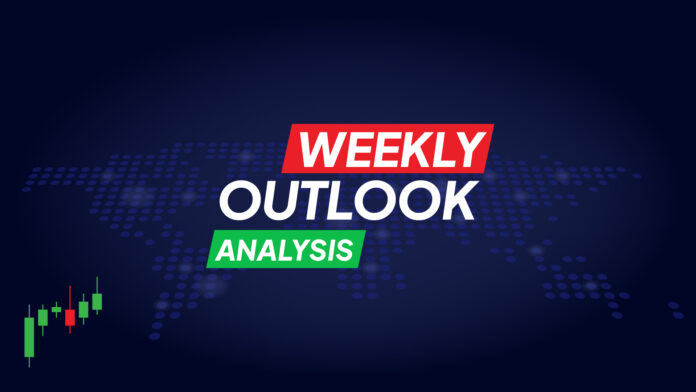Key points to watch out for:
- The Federal Reserve meets on Wednesday after inflation data released last week.
- Will the Bank of Japan end its ultra-loose monetary policy?
- UK’s PMI and inflation data will be crucial.
Federal Reserve meeting: brace for impact
This week is undoubtedly one of the busiest on the economic calendar, perhaps the most important for investors. Many banks will make key decisions this week, but the most important will be on Wednesday, March 20, when the Federal Reserve (Fed) meets. There is much anticipation about the possibility of a shift towards a more flexible monetary policy in the United States.
Rate cut bets have been a roller coaster ride in a context of mixed signals about the strength of the Fed’s mandates, mainly the labor market and price stability. In summary, both inflation and the labor market seem to be reaching a point of stagnation, albeit gradually. For example, recent reports on both the CPI and nonfarm payrolls have confirmed this trend.
The Fed, which has not yet committed to cutting interest rates, may be close to adopting more accommodative monetary policies. Fed Chair Jerome Powell told lawmakers a couple of weeks ago that they are not far from inflation starting to move towards the 2% target level.
However, the Fed’s estimated rate cuts are linked to the expectation that inflation will continue to trend downwards despite the slowdown in the disinflation process. Although this trend has started to generate controversy because recent data has shown that inflation may be stagnating before reaching the target level.
Will the Bank of Japan end its easy money policy?
This month, the Japanese yen has appreciated ahead of the Bank of Japan (BoJ) meeting, where all indications point to an end to its negative interest rate policy. Early signs from spring wage negotiations indicate that wage settlements will be much higher than a year ago. Governor Ueda has made it clear that any move away from negative rates is conditional on continued acceleration in wage growth.
Some BoJ members believe that these criteria are already being met and could vote for a rate hike at the meeting on Tuesday, March 19. However, it is important to remember that Japan’s monetary policy has also been characterized by its calmness, so it is unlikely that Governor Ueda will support this idea until he has a clear picture of the wage situation.
Market expectations reflect a 40% probability for a rate hike in March, increasing to 70% for April, suggesting growing anticipation of policy tightening.
Another reason for the Bank of Japan to wait is that the Consumer Price Index will not be released until Friday, March 22. Although the annual rate of Tokyo’s CPI rose last month, this is expected to be similar to the rest of the country’s figures.
As for the yen, this month’s meeting could lead to some gains in the exchange rate, although there seems to be no rate hike for now. It is possible that policymakers will implement major changes to achieve the inflation target on a sustained basis. There is a possibility of some changes in asset purchases to end the ETF program.
Consequently, the Japanese currency could attract buyers until the next meeting in April. What happens next will depend solely on whether the BoJ abandons its yield curve control policy and whether a rate hike turns out to be a one-off.
In addition to the CPI figures, Japan will release machinery orders on Monday, March 18, and PMI indices on Thursday, March 21.
Bank of England meeting could be affected by UK CPI data
The pound sterling is the only major currency that has held up well against the US dollar so far in 2024. This is because the Bank of England is unlikely to cut interest rates until possibly August, while the European Central Bank and the Federal Reserve are likely to do so in June. Recent evaluations suggest that, based on central bank rates, the UK boasts the highest interest rates among the G7 nations as of now..
Bank of England officials remain less negative about cutting rates than officials from other central banks, although they have hinted that policy could become more flexible later this year.
The Monetary Policy Committee will see several important data releases on the UK economy this week that will help the bank make the best decision.
The Euro: a currency under constant scrutiny
The upcoming Eurozone PMI estimates are critical, should they indicate robust economic activity, they may temper expectations for immediate ECB rate cuts. Conservatives and optimists are constantly at odds, not only on the speed at which the central bank should begin a period of easing, but also on the magnitude of the cut.
Given the rapid fading of inflationary pressures and a stagnant economy, the ECB could be more forceful than the Federal Reserve in cutting rates. However, while inflation expectations remain optimistic, there are signs that economic growth has regained momentum. In February, the services PMI crossed the neutral 50-point threshold for the first time since July, and is expected to continue improving in March. Although the manufacturing sector remains in contractionary territory, there are also signs of recovery there.



